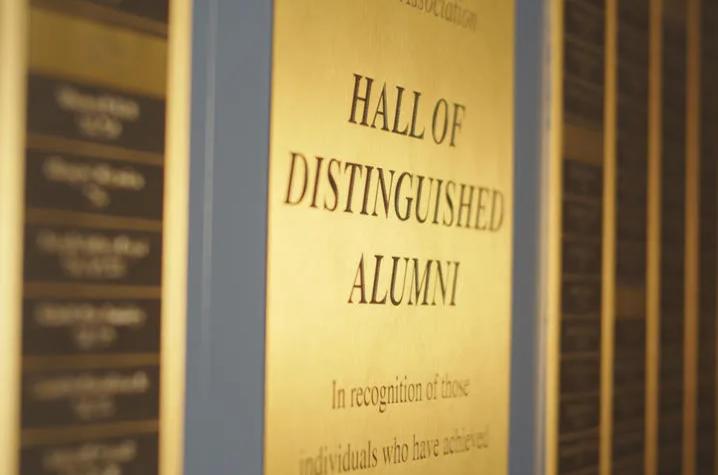Simulations of Gauge Theories on Quantum Computers
Gauge theories describe the fundamental interactions, but their complexity makes questions involving real-time dynamics beyond the reach of classical computation. Quantum computers open a new path by naturally representing quantum fields and evolving them in real time thus circumventing for example the sign problem that limits classical Monte Carlo methods. In this talk, we will discuss the challenges and recent progress in encoding and simulating Gauge theories on fault-tolerant quantum computers.
Physics & Astronomy Astro Seminar
Title: Better Together: Combining the Strengths of Rubin, LS4 and Euclid for Time-domain Science and Cosmology
Abstract: We have entered an exciting decade for survey science with such space-based surveys as Euclid and such ground-based surveys as LSST and LS4 providing overlapping imaging datasets across the optical and IR. LSST will identify thousands of tidal disruption events (TDEs) and millions of AGN and supernovae, including hundreds of gravitationally lensed supernovae (gLSNe) from which we can measure the Hubble Constant. I will discuss how joint analysis of ground and space-based data via multi-resolution forward modeling methods will enable us to search for TDEs from non-nuclear massive black holes, undertake time delay cosmography with populations of gLSNe and study the environments of supernovae and dwarf galaxy AGN.
Arts and Sciences alumni shine among UK’s most distinguished graduates
By Meredith Weber
LEXINGTON, Ky. (Sept. 8, 2025) — On Sept. 12, the University of Kentucky will induct 20 alumni into the 2025 Hall of Distinguished Alumni. The alumni will be honored for their meaningful contributions to the Commonwealth, nation and the world.

Ellen D.B. Riggle receives Graduate School's Kirwan Memorial Prize
LEXINGTON, Ky. (June 12, 2025) — Each year, the University of Kentucky Graduate School recognizes exceptional faculty for their achievements in graduate education and scholarly research. Ellen D.B. Riggle, Ph.D, receives the Albert D. and Elizabeth H. Kirwan Memorial Prize, awarded for outstanding contributions to original research and scholarship.
Physics & Astronomy String Theory Seminar
NB: non-standard time!
Title: Symmetry-weighted ensemble averaging from TQFT gravity
Abstract: In a recently proposed framework of TQFT gravity (2310.13044, 2405.20366) -- a toy model of AdS3 gravity -- a bulk 3d TQFT summed over all topologies is shown to be dual to a unitary ensemble of boundary 2d CFTs. I will show that the CFTs in this ensemble are weighted by the inverse of the order of their symmetry group (relative to the categorical symmetry provided by the bulk TQFT as a SymTFT). Mathematically, this is the natural measure over the groupoid of the TQFT Lagrangian algebras that construct the CFTs, and the holographic duality then provides a generalization of the Siegel-Weil formula beyond averaging over bosonic lattice-CFTs. I will also discuss some examples for rational CFTs as well as implications to noncompact TQFTs and pure gravity.
The Kick Start: Meet & Greet with AAAS

Undergrads find paths to careers, fulfillment in two new UK Arts and Sciences majors
By Richard LeComte
LEXINGTON, Ky. -- Two recently added bachelor’s degree programs in the University of Kentucky’s College of Arts and Sciences have drawn students with passions for the law and statistics.

Physics & Astronomy Colloquium
Dr. Matthew Bayliss, University of Cincinnati
Title: Taking Galaxies Apart and Putting Them Back Together Again
Abstract: Understanding the growth and evolution of stars and galaxies across cosmic time is a cornerstone of modern observational cosmology. After Cosmic Dawn, the first generation of galaxies powered much of cosmic re-ionization. Later, the global star-formation density accelerated toward its peak at Cosmic Noon, when most of the stellar mass in the Universe was formed. The industry standard is to use individual galaxies as the de facto measurement unit. There are practical reasons for counting galaxy-by-galaxy: galaxies grow and reside in dark matter haloes that map back to primordial mass over-densities, and even space-based observatories can only marginally resolve galaxies in the distant universe. However, the physical processes that drive galaxy growth and evolution -- cloud collapse, star formation, feedback, etc. -- operate on scales much smaller than a galaxy. I will present ongoing work using bright, strongly lensed galaxies to zoom in on the scales of individual star clusters to resolve the physics of what's happening inside distant galaxies.
Physics & Astronomy Nuclear Science Seminar
Title: From chiral effective field theory to perturbative QCD: A Bayesian model mixing approach to neutron star matter
Abstract: Constraining the equation of state (EOS) of strongly interacting, dense matter is the focus of significant experimental, observational, and theoretical effort. While chiral effective field theory (EFT) can describe the EOS between the typical densities of nuclei and those in the outer cores of neutron stars, perturbative QCD (pQCD) can be applied to properties of deconfined quark matter, both with quantified theoretical uncertainties.
However, describing the full range of densities in between with a single EOS that has well-quantified uncertainties is a challenging problem. Bayesian model mixing (BMM) can help bridge the gap between the two theories.
In this talk, I will present a BMM framework that can combine EOS constraints from different density regions in a principled way to construct a globally predictive, composite EOS model based on Gaussian processes (GPs). I will discuss applications of this BMM framework to the EOS and structure of neutron stars, as well as the statistical uncertainty quantification of the underlying microscopic EOS calculations.
